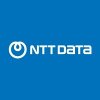Security Engineer
100+ Security Engineer Interview Questions and Answers

Asked in Signode

Q. What is Kerberos, and how can we defend against attacks targeting it?
Kebros is a security tool used to defend against cyber attacks by monitoring and analyzing network traffic.
Kebros uses advanced algorithms to detect suspicious activity in real-time.
It can block malicious traffic and prevent unauthorized access to the network.
Kebros can generate alerts and reports to help security engineers investigate and respond to potential threats.
Regularly updating Kebros with the latest threat intelligence is crucial for effective defense.

Asked in LanzeIntegra Technologies

Q. What is the difference between hashing and encryption?
Hashing is one-way function for data integrity while encryption is two-way function for data confidentiality.
Hashing is irreversible and used for data integrity verification.
Encryption is reversible and used for data confidentiality protection.
Hashing produces a fixed-length output (hash value) while encryption output length can vary.
Example: Hashing - MD5, SHA-256; Encryption - AES, RSA

Asked in NTT Data

Q. What is the architecture of a Checkpoint firewall and how does packet flow through it?
Checkpoint firewall architecture consists of multiple components like Security Gateway, Security Management Server, SmartConsole, etc.
Checkpoint firewall architecture includes Security Gateway, Security Management Server, SmartConsole, etc.
Packet flow through Checkpoint firewall starts with incoming packets being inspected by the Security Gateway.
After inspection, packets are processed based on security policies defined in the Security Management Server.
Filtered packets are t...read more

Asked in Signode

Q. What high-priority alerts have you worked on, and can you describe the scenarios?
I have managed various high alert scenarios, focusing on incident response and threat mitigation.
Responded to a DDoS attack, implementing rate limiting and traffic filtering to mitigate impact.
Handled a ransomware incident by isolating affected systems and restoring from backups.
Investigated a data breach alert, conducting forensic analysis to identify the source and extent of the breach.
Managed alerts from SIEM tools, prioritizing incidents based on severity and potential im...read more

Asked in Accenture

Q. Explain the concept of brute-force attacks.
Brute forcing is a method of guessing a password or encryption key by trying all possible combinations.
Brute forcing is a trial-and-error method used to crack passwords or encryption keys.
It involves trying all possible combinations until the correct one is found.
This method can be time-consuming and resource-intensive.
Brute forcing can be used for both online and offline attacks.
Examples of tools used for brute forcing include John the Ripper and Hashcat.

Asked in Flipkart

Q. What is antivirus, encryption, types of hacking
Antivirus is a software that detects and removes malware. Encryption is the process of converting data into a code. Types of hacking include phishing, social engineering, and brute force attacks.
Antivirus software detects and removes malware such as viruses, worms, and Trojan horses
Encryption is the process of converting data into a code to prevent unauthorized access
Types of hacking include phishing, social engineering, and brute force attacks
Phishing is a type of hacking wh...read more
Security Engineer Jobs




Asked in LanzeIntegra Technologies

Q. What is the difference between white hat and black hat hacking?
White hat hackers are ethical hackers who use their skills to improve security, while black hat hackers are malicious hackers who exploit vulnerabilities for personal gain.
White hat hackers are ethical hackers who work to improve security by finding and fixing vulnerabilities in systems.
Black hat hackers are malicious hackers who exploit vulnerabilities for personal gain or to cause harm.
White hat hackers may be hired by organizations to test their security defenses, while bl...read more

Asked in Diebold Nixdorf

Q. In the CIA triad, which aspect do you consider most important and why?
Confidentiality is the most important in CIA according to me.
Confidentiality ensures that sensitive information is protected from unauthorized access.
It involves implementing access controls, encryption, and secure communication channels.
Examples include securing user data, protecting trade secrets, and safeguarding classified information.
Confidentiality is crucial in maintaining trust, privacy, and preventing data breaches.
Share interview questions and help millions of jobseekers 🌟


Asked in Accenture

Q. What is the concept of Frida?
Frida is a dynamic instrumentation toolkit for developers, reverse-engineers, and security researchers.
Frida allows you to inject JavaScript or native code into an application to perform dynamic analysis.
It can be used to hook functions, intercept network traffic, and bypass SSL pinning.
Frida supports both iOS and Android platforms.
It can be used for both offensive and defensive security purposes.

Asked in FICO

Q. How would you manage the fast pace and dynamic 24/7 environment?
I would manage the fast pace and dynamic 24*7 environment by prioritizing tasks, staying organized, and effectively communicating with team members.
Prioritize tasks based on urgency and impact on security
Stay organized by using tools like task management software and creating a schedule
Communicate effectively with team members to ensure everyone is on the same page and can quickly address any security incidents
Be adaptable and able to quickly respond to changing situations

Asked in Accenture

Q. What are the different types of scopes?
Scopes refer to the boundaries or limits of a particular security system or protocol.
Scopes define the extent of access or control that a user or system has within a security system.
Scopes can be defined by user roles, permissions, or other criteria.
Examples of scopes include network access, file permissions, and application privileges.

Asked in LanzeIntegra Technologies

Q. What is password spraying?
Password spraying is a type of cyber attack where attackers try a few common passwords against many usernames.
Attackers use common passwords to try and gain access to multiple accounts.
Unlike brute force attacks, password spraying involves trying a few passwords against many accounts.
Attackers aim to avoid detection by not triggering account lockouts.
Organizations can defend against password spraying by enforcing strong password policies and multi-factor authentication.
Exampl...read more

Asked in LanzeIntegra Technologies

Q. What is the penetration testing methodology?
Pentesting methodology is a systematic approach used to identify and exploit vulnerabilities in a system to improve security.
1. Reconnaissance: Gather information about the target system.
2. Scanning: Identify open ports and services on the target system.
3. Gaining access: Exploit vulnerabilities to gain access to the system.
4. Maintaining access: Maintain access to the system for further testing.
5. Covering tracks: Remove evidence of the pentest to maintain stealth.
6. Reporti...read more

Asked in Security Innovation

Q. Explain the OWASP Top 10 in detail, including types, exploitation, and mitigations.
Overview of OWASP Top 10 vulnerabilities, their exploitation methods, and detailed mitigations.
1. Injection: Attackers can execute arbitrary commands via unsanitized inputs. Mitigation: Use prepared statements and parameterized queries.
2. Broken Authentication: Weak password policies can lead to account takeover. Mitigation: Implement multi-factor authentication and strong password policies.
3. Sensitive Data Exposure: Unencrypted data can be intercepted. Mitigation: Use TLS f...read more

Asked in Accenture

Q. complete security testing performed throught SDLC life cycle
Security testing should be performed at every stage of SDLC to ensure a secure product.
Security requirements should be defined at the planning stage
Threat modeling should be done during the design phase
Code review and vulnerability scanning should be done during the development phase
Penetration testing and security acceptance testing should be done during the testing phase
Security monitoring and incident response planning should be done during the deployment and maintenance p...read more

Asked in Accenture

Q. How can SSL pinning be bypassed?
SSL pinning can be bypassed by modifying the app's code or using a tool to intercept and modify the SSL traffic.
Modify the app's code to disable SSL pinning
Use a tool like Frida or Cydia Substrate to intercept and modify SSL traffic
Use a man-in-the-middle attack to intercept and modify SSL traffic
Use a custom SSL certificate to bypass SSL pinning
Use a debugger to bypass SSL pinning

Asked in Accenture

Q. write a commend of nmap? Now explain it
nmap is a network exploration tool used to scan and map networks and identify open ports and services.
nmap can be used to identify hosts and services on a network
It can also be used to identify open ports and vulnerabilities
nmap can be used to perform ping scans, TCP scans, and UDP scans
It can also be used to perform OS detection and version detection
nmap can be used with various options and flags to customize the scan
Asked in RAX Security

Q. What is the OWASP top 10?
OWASP top 10 is a list of the most critical web application security risks.
It is published by the Open Web Application Security Project (OWASP)
It includes risks such as injection, broken authentication and session management, cross-site scripting (XSS), and more
It is updated every few years to reflect new threats and vulnerabilities
It is used by security professionals to prioritize their efforts and focus on the most important risks

Asked in Accenture

Q. How is a registry patch pushed when a machine is vulnerable?
Registry patches can be pushed using patch management tools like SCCM or WSUS, or manually through Group Policy or scripts.
Use patch management tools like SCCM or WSUS to push registry patches automatically
Manually push registry patches through Group Policy or scripts
Ensure proper testing before pushing patches to avoid any issues

Asked in LanzeIntegra Technologies

Q. Authentication vs authorisation
Authentication verifies a user's identity, while authorization determines what actions a user is allowed to perform.
Authentication confirms the user's identity through credentials like passwords or biometrics.
Authorization controls access to resources based on the authenticated user's permissions.
Example: Logging into a system with a username and password is authentication, while being able to view or edit specific files based on user roles is authorization.

Asked in LanzeIntegra Technologies

Q. What methods do you know for securing authentication?
Secure authentication methods are crucial for protecting sensitive information.
Use multi-factor authentication (MFA) to add an extra layer of security
Implement strong password policies, including regular password changes
Utilize biometric authentication such as fingerprint or facial recognition
Employ single sign-on (SSO) for centralized authentication management
Monitor and analyze authentication logs for suspicious activity

Asked in Accenture

Q. Write a basic XSS payload
A basic XSS payload is a script injected into a website to execute malicious code on a victim's browser.
Use the

Asked in Accenture

Q. What is SQL Injection? What are the different types of SQL Injection?
SQL Injection is a type of cyber attack where malicious SQL statements are inserted into an entry field to manipulate a database.
Attackers use SQL Injection to gain unauthorized access to sensitive data
It can be prevented by using parameterized queries and input validation
Types include In-band, Inferential, and Out-of-band
Examples of SQL Injection attacks include UNION-based and Error-based attacks

Asked in Accenture

Q. What does the -oX option do in Nmap?
oX in nmap is used to specify the IP protocol number to use for scanning.
oX is followed by the protocol number (e.g. oX1 for ICMP protocol)
It can be used with other nmap options like -sS or -sU
It is useful for scanning non-standard protocols

Asked in FICO

Q. How would you triage a security incident?
Triage a security incident by assessing severity, containing the threat, and investigating the root cause.
Assess the severity of the incident based on impact and likelihood of exploitation.
Contain the threat by isolating affected systems, changing credentials, or blocking malicious traffic.
Investigate the root cause by analyzing logs, conducting forensics, and identifying vulnerabilities.
Prioritize response actions based on criticality and potential impact on the organization...read more

Asked in LanzeIntegra Technologies

Q. What is the difference between LFI and RFI?
LFI allows an attacker to include files on a server through the web browser, while RFI allows an attacker to execute arbitrary code on a server.
LFI stands for Local File Inclusion, where an attacker can include files on a server using a vulnerable script.
RFI stands for Remote File Inclusion, where an attacker can execute arbitrary code on a server by including a remote file.
LFI is limited to files that are already present on the server, while RFI allows for remote code execut...read more

Asked in Inspirisys Solution

Q. MDM tools and it's characteristics?
MDM tools are used to manage and secure mobile devices in an organization.
MDM stands for Mobile Device Management.
These tools allow organizations to remotely manage and control mobile devices.
Characteristics of MDM tools include device enrollment, policy enforcement, app management, and remote wipe.
Examples of MDM tools include Microsoft Intune, VMware AirWatch, and MobileIron.

Asked in ValueLabs

Q. How Siem works Mitre attack framework Cyber kill chain Different types of attack
SIEM works by collecting and analyzing security data to detect and respond to cyber threats. Mitre attack framework and Cyber kill chain are used to categorize and analyze attacks.
SIEM collects security data from various sources like logs, network traffic, and endpoints for analysis.
Mitre attack framework provides a structured way to categorize and analyze cyber threats based on tactics and techniques used by attackers.
Cyber kill chain breaks down the stages of a cyber attack...read more

Asked in Samsung

Q. List all the security solutions you are familiar with?
I am familiar with a variety of security solutions including firewalls, antivirus software, intrusion detection systems, encryption tools, and security information and event management (SIEM) systems.
Firewalls
Antivirus software
Intrusion detection systems
Encryption tools
Security information and event management (SIEM) systems

Asked in SecurView Systems

Q. What is HTTP smuggling and how does it work?
HTTP smuggling is a technique used to bypass security measures by manipulating the way HTTP requests are interpreted by intermediaries.
HTTP smuggling involves sending specially crafted HTTP requests that can be interpreted differently by different components in the communication chain
It can be used to bypass firewalls, web application firewalls, and other security measures
One example of HTTP smuggling is HTTP request smuggling, where an attacker sends a request that can be in...read more
Interview Questions of Similar Designations
Interview Experiences of Popular Companies





Top Interview Questions for Security Engineer Related Skills



Reviews
Interviews
Salaries
Users

















